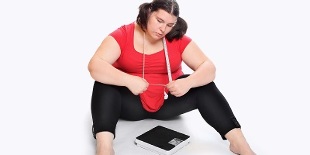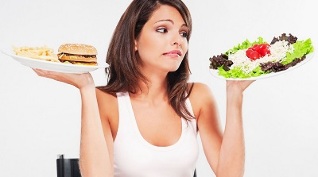
Thick sides. A belly that suggests (albeit unreasonably) an irresistible passion for beer. Libra arrow causing nervous tremors. The word "waist" has long been forgotten, not to mention the abdomen. His Majesty Being overweight is pointless and ruthless. The worst enemy of health, he brings a lot of grief from a purely aesthetic point of view. So the day begins with weighing, continues with counting calories and ends with little hope of removing at least half an inch from the waist. . .
The main ally in this difficult battle is proper nutrition, which has very little to do with half-starved diets that reach absurdity. A well-developed diet and a proper diet are much more effective than meaningless calorie counting. This applies both to the obvious fat men and to those who want to "dry out" the body a bit and get beautiful shapes. How to eat properly to lose weight? We will talk about this in this article.
Fractional nutrition: speeding up metabolism
Obvious pattern: the faster the metabolism, the sooner the extra pounds will leave "home". The rate of metabolism is very individual. Some can eat without thinking about calories at all, and not gain weight. For those whose metabolism is slow, it is much harder to get rid of fat deposits. Diets are not very effective for them. But a properly selected regimen can speed up the metabolism. This will help:
- frequent meals in small portions;
- enough fluid;
- complete sleep with normal duration;
- active physical activity and training.
The focus should be on partial feeding. With frequent meals, the metabolism is significantly accelerated. If the portions are small, the effect is enhanced. And vice versa: rare but abundant meals slow down the metabolism (and the inevitable consequence - unused calories turn into unattractive folds of fat).
Some nutritionists believe that only by following such a regime, you can achieve weight loss of almost tens of pounds (of course, if those pounds were excess). Perhaps these figures are slightly exaggerated. But the benefits of partial nutrition are undeniable. There are few, but often - a much more effective way to lose weight than a half-starved diet. And much healthier for health. After all, any change in the usual diet, which is inevitable when switching to a particular diet, is stressful for the body, even if the diet itself is complete. Plus hunger, plus lack of nutrients. And the transition to partial nutrition is perceived by the body quite positively.
Spend more than you eat
Anyone who is struggling with being overweight will probably tell you about a dozen tried and tested diets. Japanese and Hollywood, buckwheat and kefir, blood type diets are just some of the most famous. They are similar in one thing: a significant reduction in calories.

This is generally correct: calories should not be consumed more than energy is expended. All that is not expended is the accumulation of fat itself, which it struggles with. Can the body be made to expend more energy? You can and should! First of all, increase physical activity: they consume a lot of calories. Workouts that are long enough and not too intense, such as walking at a fast pace, are suitable. Fat is burned especially quickly when the body's stores of glycogen are depleted: this happens after strength training. This phenomenon is also observed on an empty stomach in the morning (for this reason it makes no sense to refuse breakfast).
Another important point is feeding time. A high-calorie dinner eaten at night is a direct path to overweight: during sleep, the metabolism slows down and those calories that came with a hearty diet will not be expended.
Calorie counting is a passion for many. However, they must be counted correctly, limited - also reasonably. Calculate how much you eat each day in your "normal" mode, without any diet. Such accounting must be kept within five days, recording the composition of the dishes, their weight and calculating the caloric content of the dishes eaten using tables. Sum the number of calories for each day, divide by 5 (number of days) - determine the average calorie content in your diet. This figure will have to be reduced. It is desirable to determine the composition of the usual daily menu: the amount of fat, protein and carbohydrates. This will help you find the best diet for you.
About the "wrong" products
The products are different. Useful and, say, not very good. Those that are not many should ideally be discarded. In practice, let's face it, very few people manage to realize a good idea. Therefore, we will not give too harsh recommendations. But you still need to limit some products. Their benefits are minimal (if any) and are harmful to the digestive system. So what are these products?
- All kinds of snacks (chips, salted crackers and nuts, etc. ): they have too much salt and flavors that are not good for your health or your waistline. French fries.
- Semi-finished products such as dumplings, frozen pizza.
- Mayonnaise (if you can't give up completely, limit the amount and switch to low-calorie varieties).
- Lemonade, Coca-Cola and other sweet soda.
- Alcoholic beverages (mostly beer).
- Ice cream, especially ice cream (this dessert is difficult to digest and the calorie content is out of scale).
- Baked yeast products (white bread, rolls). Contrary to popular belief, it is not the flour but the yeast that leads to weight gain. Instead of bread, you can switch to thin lavash (it is baked without yeast). It is not necessary to exclude pasta - it is enough not to add too greasy sauces to them.
- Chocolates and pastries. This, of course, is a "bomb" in terms of calorie content. But the harm of a piece of cake eaten once a month is much less than the stress caused by the outright rejection of a favorite treat. So let's not be too hard: enjoy your health, but only from time to time.
It is important to remember that even the most useful product may not bring the desired benefits if it is not prepared properly. Your diet menu should be cooked or steamed. No crispy crusts, minimal amount of spices. Ultimately, your goal is to satisfy your appetite, and all kinds of spices have the opposite task. Another subtlety: eat well, but monotonously: with such a menu you will not eat more than your body requires. Fanaticism, of course, is inappropriate (many popular diets are to blame). But for example, if you eat boiled fish with rice garnish, you will fill up quickly and feel full of strength and energy.
Create a sample menu

When choosing your daily diet, be sure to consider your body's needs. If you notice a deterioration in well-being - a feeling of fatigue, increased need for sleep, you may be too addicted to limiting carbohydrates. In this case, the menu will need to be adjusted.
With the right diet to lose weight you need to feel quite energetic and energetic. Here is an example of a daily menu for saying goodbye to being overweight.
For men
- rice - 200 g (henceforth we mean dry cereals that will be boiled in water);
- boiled chicken breasts - 500 g; - cottage cheese - 200 g;
- milk - 1 liter;
- vegetables - up to 30% of the total amount of food.
- water - not limited.
For women
- rice - 150 g;
- boiled chicken breasts - 500 g;
- cottage cheese - 200 g;
- milk - 1 liter;
- vegetables - up to 30% of the total amount of food;
- water - not limited.
These foods contain the necessary nutrients (nutrients). These are proteins, fats and carbohydrates. The total amount of food should be divided into several parts: it is recommended to eat every 3 hours, ensuring an even supply of nutrients throughout the day. The body must be nourished constantly. All-day meals are best prepared in the morning.
You should stick to this diet for a week, then weigh yourself. If there is no weight loss, you will need to adjust your calorie content. This should be done at the expense of carbohydrates (for example, reduce the amount of cereals by 20-25%). A week of "reduced rations" - and weigh yourself again. An excellent result is considered to be 0, 5-1 kg. If your figure is exactly like that, then the diet works, the process of losing weight has begun.
Improve diet effectiveness
Finally, here are some tips to make your fat burning diet even more effective:
- Do not exceed the amount of food planned for the day.
- Eat carbohydrate-rich foods when they are better digested. There are two times when carbohydrates are especially needed. The first is after waking up (for breakfast). The second - after training (the so-called "Protein-carbohydrate window"). After exercise, it is absolutely impossible to exclude carbohydrates. At this time, they are absorbed very well and will not turn into fat, but into muscle.
- Try to increase the amount of water you drink. You should never feel thirsty.
- The optimal rate of weight loss in such a diet is 0, 5-1 kg. Do not try to speed up the process by further reducing the calorie content in your diet: the body can "turn on" a protective reaction and react by slowing down the metabolism.
- If you start gaining weight instead of the desired weight loss, it means that you have abruptly violated your diet and diet.































































